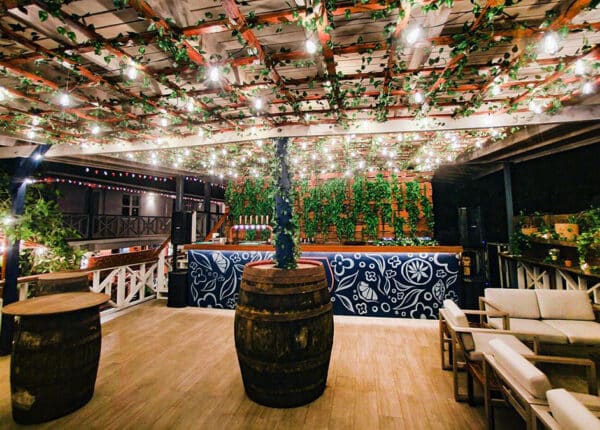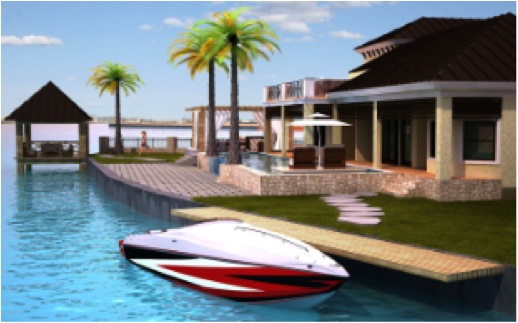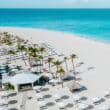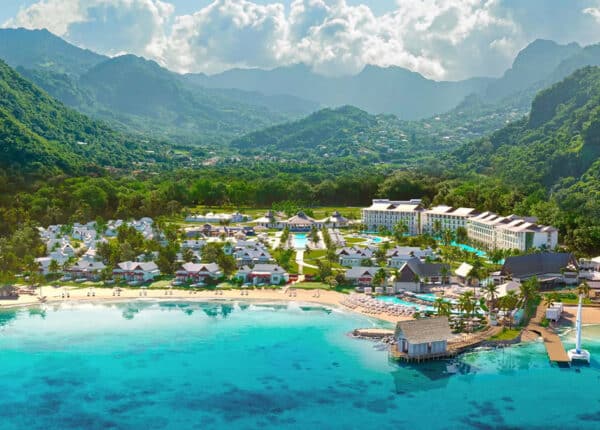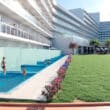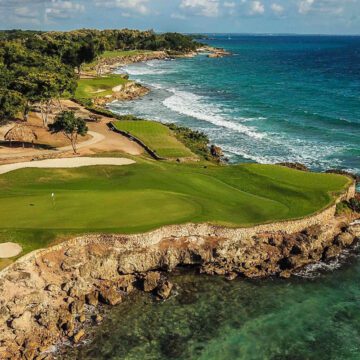Greentech’s James Whittaker on Green Building in Grand Cayman
By Alexander Britell
The first residential home certified as part of the US Green Buildings Council’s International LEED programme is in Grand Cayman, the initiative of Greentech Managing Director James Whittaker, who is spearheading the green building movement in Cayman. Cayman is just one of four places in the world to be part of what is currently a pilot programme, along with China, India and Saudi Arabia. Caribbean Journal talked to Whittaker about the company’s first home, which is called the Sailfish Estate, green building in the Caribbean, and plans to expand to other islands.
How did you get involved with green building?
I started Greentech in about late 2008. Since then I had been in contact with people from the US Green Buildings Council, as well as some professionals in the USA about bringing LEED certification to Cayman. I realized at the time that there wasn’t actually an international residential programme, so I started providing the requisite information to make the USGBC. In 2010, we got accepted into the pilot programme. Thereafter, we started to set up the company, in such a way that we offered three core services – sustainable design, consulting — which encapsulates a lot of things, namely product consulting and design consulting — also project management and the third service was the actual certification services, where we have the green raters come in and certify the home in approximately three or four different indexes, depending on the size and complexity of the home. One of the things we found on island was there was a lack of, I would say, expertise in the actual energy modeling side of things.
Talk about the Sailfish Estate.
One of the things I did as a part of my business model is, once I’d gotten into the international programme, I was going to start building essentially three homes, what I term as showcase homes, which are built for really marketing for ourselves as a company and for our project partners that are involved with these projects. So Sailfish is one of the first of the three showcase homes for Grentech that we were going to build. It’s the first home to ever be internationally LEED certified, and we’re looking to finish that home in early September. The Sailfish home is built to a LEED silver certification. In that home, we started with sustainable design, and even incorporated what’s called passive landscaping, along with extensive use of recycled materials and sustainable bamboo floors. In addition to that, the mechanical system is optimally sized for the home. So when you look at how we built the home, structurally, it’s very energy efficient. The anticipated energy bill for the entire home is about $217 per month, and the building is 5,373 square feet — so it’s very energy efficient. And that doesn’t include the four-kilowatt solar panel we have on the roof and the fact that it offsets about 40 percent of the home’s energy use.
How would you describe the state of green building in the Caribbean?
It’s in its blossoming state. Obviously with the tradewinds, with the sunshine that we have, and the high cost of fuel in the region — it’s among the highest fuel charges in the world — it’s just really costs a lot to live here in the Caribbean, and it’s not going to get any cheaper. So I think green building, as it currently stands, is not widely accepted, even in this market, and it’s not widely known. There’s a lot of market education that has to happen here and around the Caribbean. But this is, in my view, the only way to go — people simply are not going to be able to afford to live in homes built to the status quo, with concrete block and fiberglass insulation. Five to 10 years from now, people will find it harder to stay in those homes and pay their mortgage because of the high cost of living. My view is that right now it’s not widely accepted, but it’s certainly going to be.
What are the challenges of green construction in the Caribbean?
I found the challenges are market education and getting the right products here. Obviously we have to import everything that we do here, particularly in Cayman, there’s not a lot of resources to be able to build green. So that poses its own challenges. But as a company, we feel that we’ve overcome that. We’ve got a great access to a lot of products. But I would say the ability to get sustainable products here on island, as well as the challenge of educating the marketplace on why they should build green — and what are the advantages of it.
Does the government have any green building initiatives?
Currently, no. We’re not working with the government. Nor is there a lot of government support for green initiatives, in terms of reductions in import duties and those sort of things we would like to see. We’re going to be looking at speaking to the local government to effect that kind of change, to make sure that sustainable building is viable here and that the government supports it. In fact, I’ve started the Cayman Islands Green Buildings Council, which is going to be a collection of like-minded people on the island. We’re going to try to include people from the government. One of the main goals of the CIGBC will be to effect positive change for sustainable building and sustainable lifestyles. That will mean collaboration with the government in terms of getting duties for sustainable concessions, and for electric vehicles, and things that can make as a more sustainable society going forward. I do envision that the government will be a part of that.
How has green construction changed in the last few years in the region?
I can really only speak for the Cayman market. What i know of the Caribbean market I know from afar, and talking from other people in the region that have started building sustainably. Everyone seems to have the same story — in the last three to five years, it’s more prominent now than it ever was. The architecture firms usually have a LEED AP person, even if they’re not thinking about building sustainably. So there is some movement that we see there in terms of people being able to think about energy efficiency, quite frankly, because it’s becoming a necessity with the high cost of living. But it’s typically people within the building industry that we see that are thinking that way. I don’t think that the average person on the street even knows what LEED is, what sustainable living is and what’s the benefit of it. I think there’s a lot of misinformation out there in the general public. In the last three to five years, I think it’s come a long way. In Cayman, there are homes that have geothermal systems, there are homes that are completely off the grid and use no public utility power whatsoever. But there is some market penetration that is happening in the sustainable building industry, but it’s still relatively small. But we do think there’s great potential there.
Do you foresee expansion to other islands?
Absolutely. Part of our business model is we want to bring LEED certification and LEED homes to the rest of the broader Caribbean. As part of our business model, we definitely plan to expand over the next few years. We’re already getting interest from people wanting us to do projects in other Caribbean islands. But as it stands now, Cayman is the only island, and Greentech is the nay company, doing LEED homes. Once the international programme is over, we have the vision that we’ll branch out to other islands.
